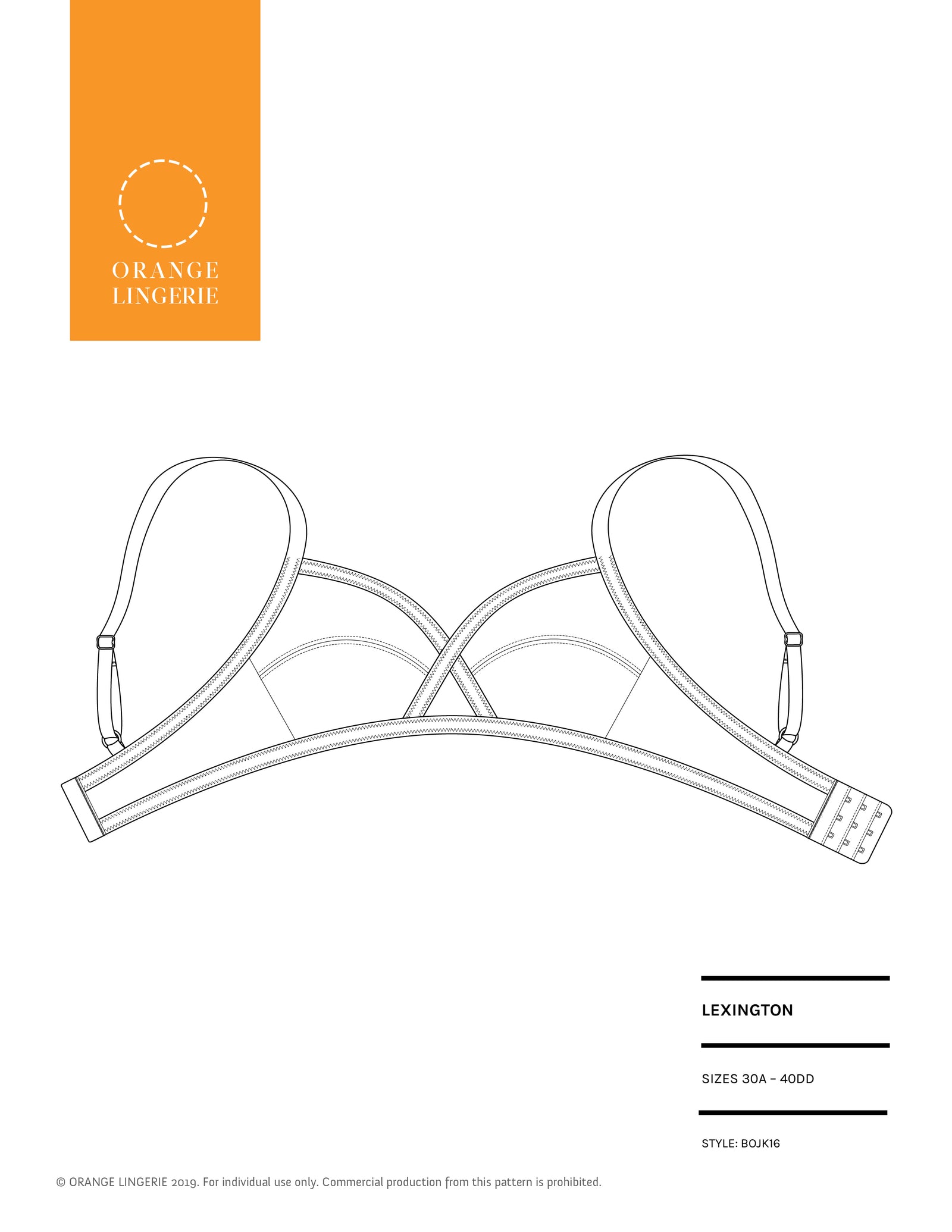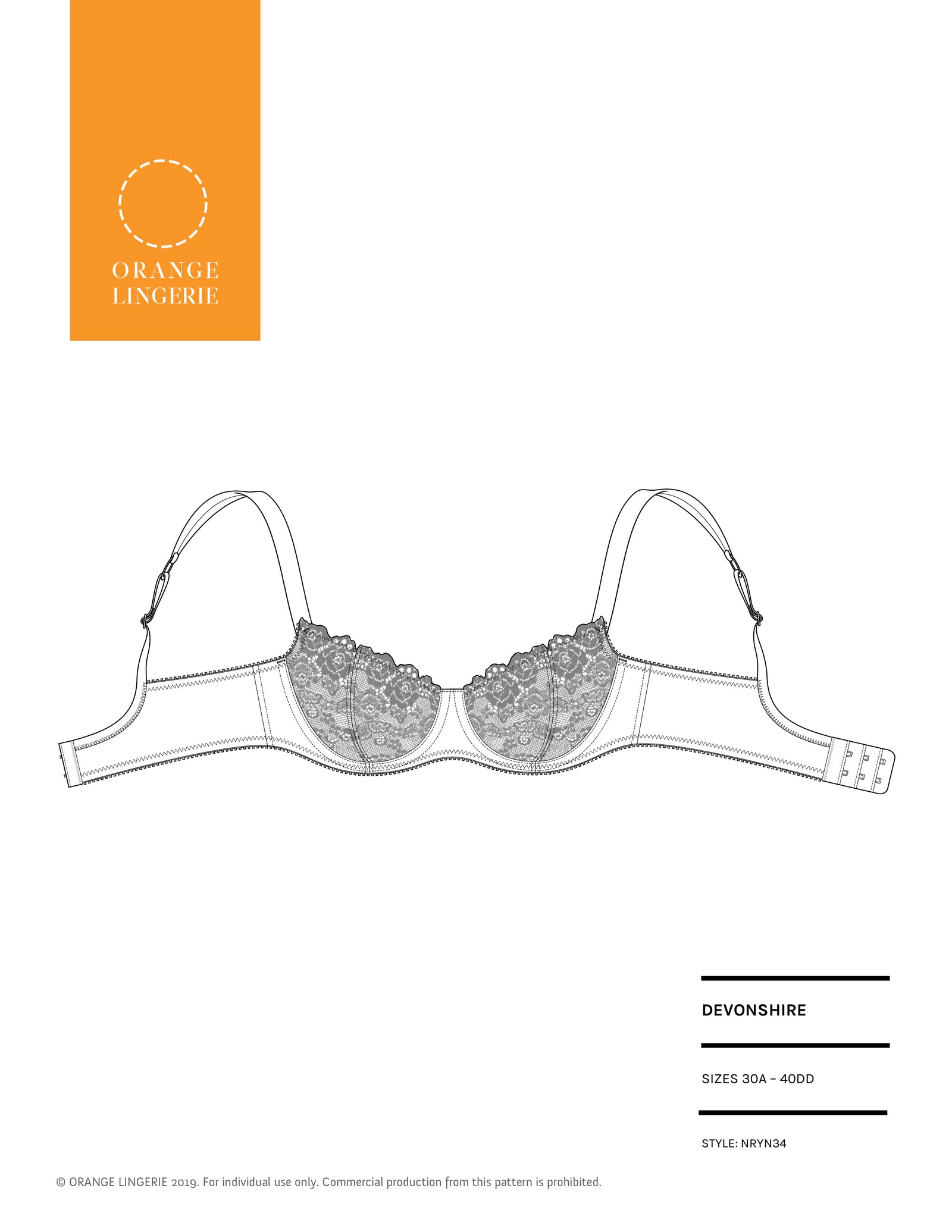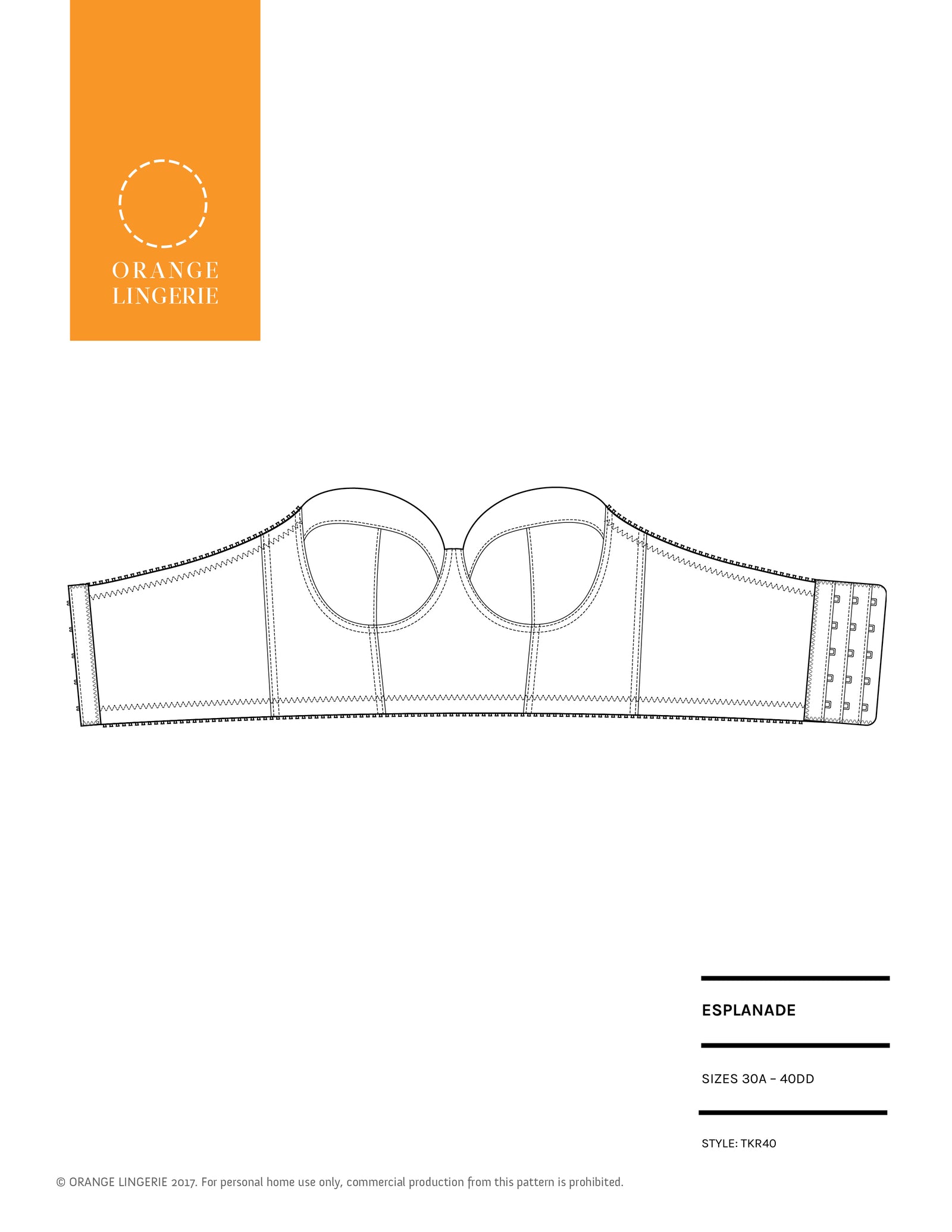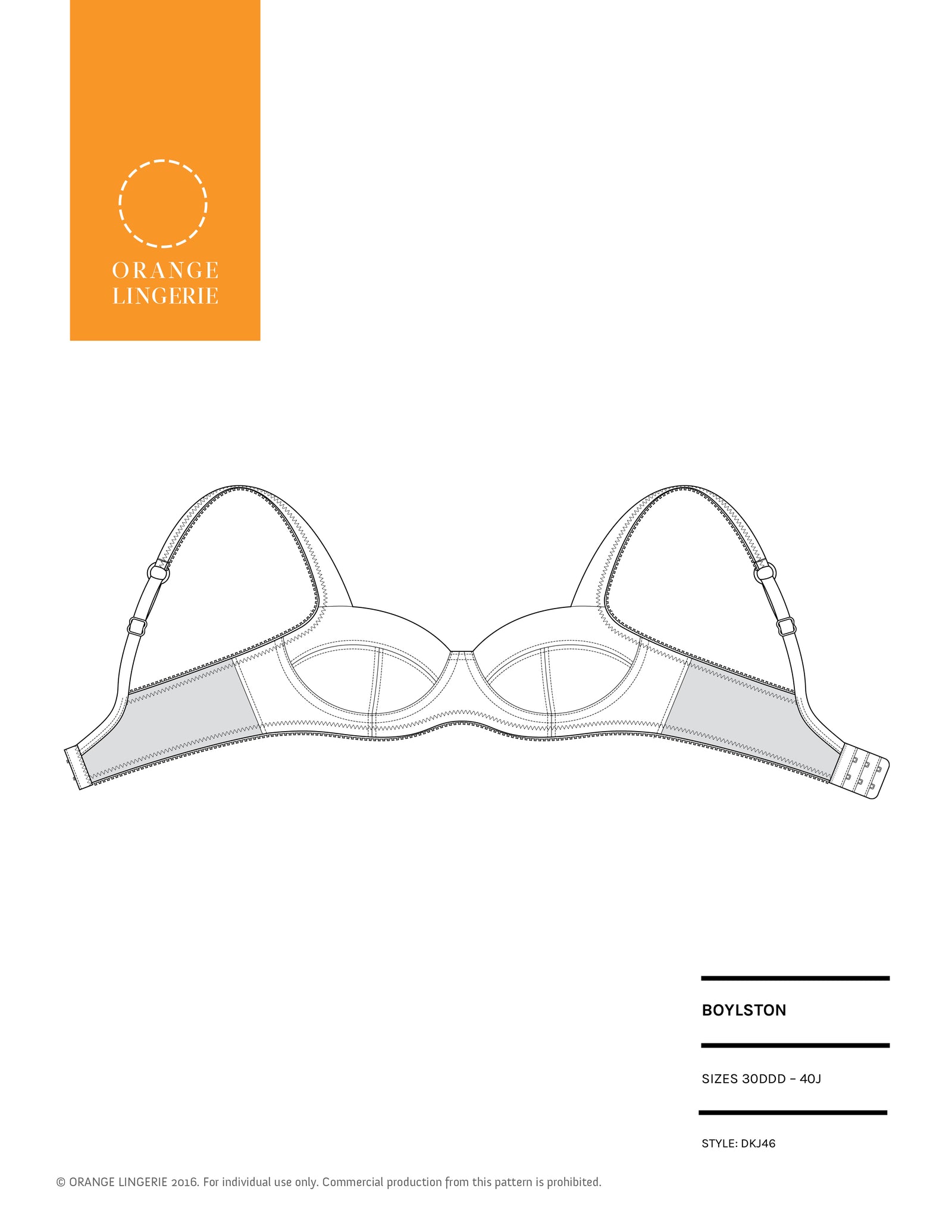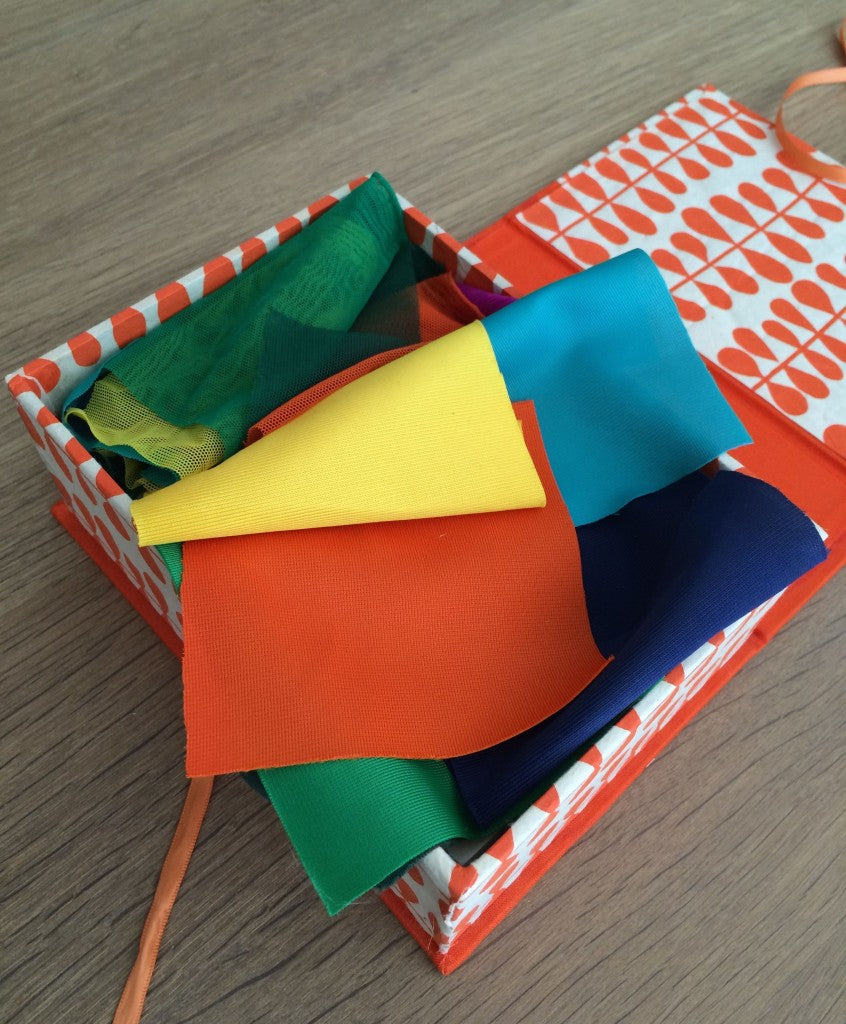
One of the potentially confusing parts of making a bra is choosing the fabric and in my book I provide general guidelines for selecting materials. With the release of my Marlborough bra pattern, I wanted to review the necessary materials and provide specific recommendations for my pattern.
Like many bras, the Marlborough requires four different fabrics; (1) cup, bridge and band fabric, (2) lace, (3) band fabric and (4) lining. I am going to tell you what you are looking for in each category and give you ideas on how to manipulate fabric to bring it into line with the desired characteristics for the Marlborough.

1) Cups, Bridge and Frame Fabric
When looking for bra making fabric you are most concerned the movement of the fabric. Movement refers to both stretch, which means the fabric contains Spandex fibers (also known as Lycra and elastane), and give, which means there is mechanical movement of the fabric based on its weave or knit.
The fabric for the bra cups should have little to no movement to contain and provide shape to the breasts. When you look for cup fabric think smooth, thin and strong because you want support and you want your clothing to move freely over the bra. You also want a fabric that is comfortable and washable.
Typical bra cup fabric fibers are nylon, polyester, cotton, Spandex and silk. Bra fabrics are usually a tricot, raschel or even jersey knit. Woven fabrics like stretch silk charmeuse (silk with Spandex) are used for luxury lingerie, as is 100% silk.
The bridge and frame also need to be made in a low to no movement fabric to keep the cups in the correct place on the body. Generally the same material that is used for the cups is used for these parts of the bra along with a stable lining for the bridge.
For creating the Marlborough, I used “Duoplex” fabric from Bra-makers Supply as my base fabric (swatches pictured above). It is a 100% polyester tricot knit fabric that has 10% movement lengthwise and no movement crosswise. I chose this fabric because it is supportive, easy to work with, wears well and comes in a lot of different colors.
Another great thing about using Duoplex as a base fabric is that it makes for easy substitutions. It is far easier to manipulate a fabric into low to no movement properties than it is to manipulate a fabric to into a specified movement factor like 30% lengthwise and 20% crosswise for example.
To manipulate a fabric to make it have low to no movement properties you can double it, line it, fuse it to a tricot interfacing or bond it to another fabric using fusible weft. If you are not sure how to go about manipulating your fabric, no worries! I will take you through the different fabric manipulation approaches in an upcoming post. Once you know how to adapt fabrics for bra making, it opens up a whole new world of possibilities!
If you want to steer clear of manipulating your fabric for now but want to use something other than Duoplex, I have had good results using bias cut silk, bias cut Liberty Tana Lawn and even a double layer of stretch charmeuse for the Marlborough. Remember to test any fabric changes in the muslin process before you sew up your final bra.

2) Upper Cup Lace
There are so many different types of laces that there are entire books on the subject. To keep the selection process simple, just refer back to the basic principles for bra cup fabric selection: thin, smooth and strong. Now clearly lace is going to deviate from the thin and smooth characteristics, but the point it to keep an eye on how much texture your lace has unless you do not mind it showing underneath your clothing. When it comes to strong, you are looking at the density of the lace. You want a lace that is not going to allow flesh to press through it, unless you plan to line it.
The Marlborough upper cup is drafted for a fairly dense and rigid (no movement) lace that uses a scalloped edge for the finished edge of the upper cup. You can substitute a stretch lace if you prefer. If your lace has stretch, is delicate or is not very dense, I recommend using a lining fabric underneath the lace for extra support and stability, especially in the D and DD cup size range.
Shopping for laces is easily one of my favorite parts of bra making. Laces are easy to find and are widely available on Etsy.

3) Band (aka Wings) Fabric
The fabric for the band must have stretch so you can comfortably breathe and move about while wearing the bra.
My pattern calls for a power mesh, also called power net. Power mesh comes in different densities, including double knit varieties (not pictured), and degrees of stretch in both the crosswise and lengthwise directions. In the picture above the upper swatches have greater density. For the Marlborough I used a power mesh with 50% lengthwise stretch and 30% crosswise stretch, the bottom swatches in the image above.
For more support, or a band that feels tighter, you can use a more dense and/or lower stretch power mesh or you can use a double layer of lighter weight power mesh. A quick note on doubling power mesh – you do get a bit of an optical effect as pictured below.

If you don’t like the look of power mesh, you can layer stretch lace or a stretch fabric over the top of it. Just be sure that the stretch of the upper layer of fabric is equal to or greater than the power mesh below it and that you test the combination of the two in the toile (a.k.a. muslin) process to be sure the band has enough stretch for your comfort. Depending on the fabrics involved, you may need to add to the band.

4) Lining Fabric
Lining fabric is used to stabilize the bridge of the bra. Lining can also be used in the fabric manipulation process to create a more stable fabric.
When you start shopping for bra making linings you will see the term “denier”. Simply put, denier is a measure of the density of the weave of the fabric. The lower the number, the more sheer and lightweight the fabric.
There is no need to line Duoplex but when I do line bra cups, the lining I like to use is a 15 denier nylon with 25% crosswise and 0% lengthwise movement (pictured at the bottom right in the image above). There are also nylon “sheer cup” linings with virtually no movement that I like to use for the bridge (the swatches pictured in the top row above).
Where to Buy
Because few of us can find bra making supplies in our local area, I have list of bra making materials suppliers on my resources page. If you are new to bra making or you just want to simplify the process of acquiring all the materials, you can always buy a bra making kit that has everything you need included all in one package.
In my next post I will review bra making notions including the elastics and other findings used in the bra making process. As always, if there is a bra making topic you want to learn more about, let me know!
